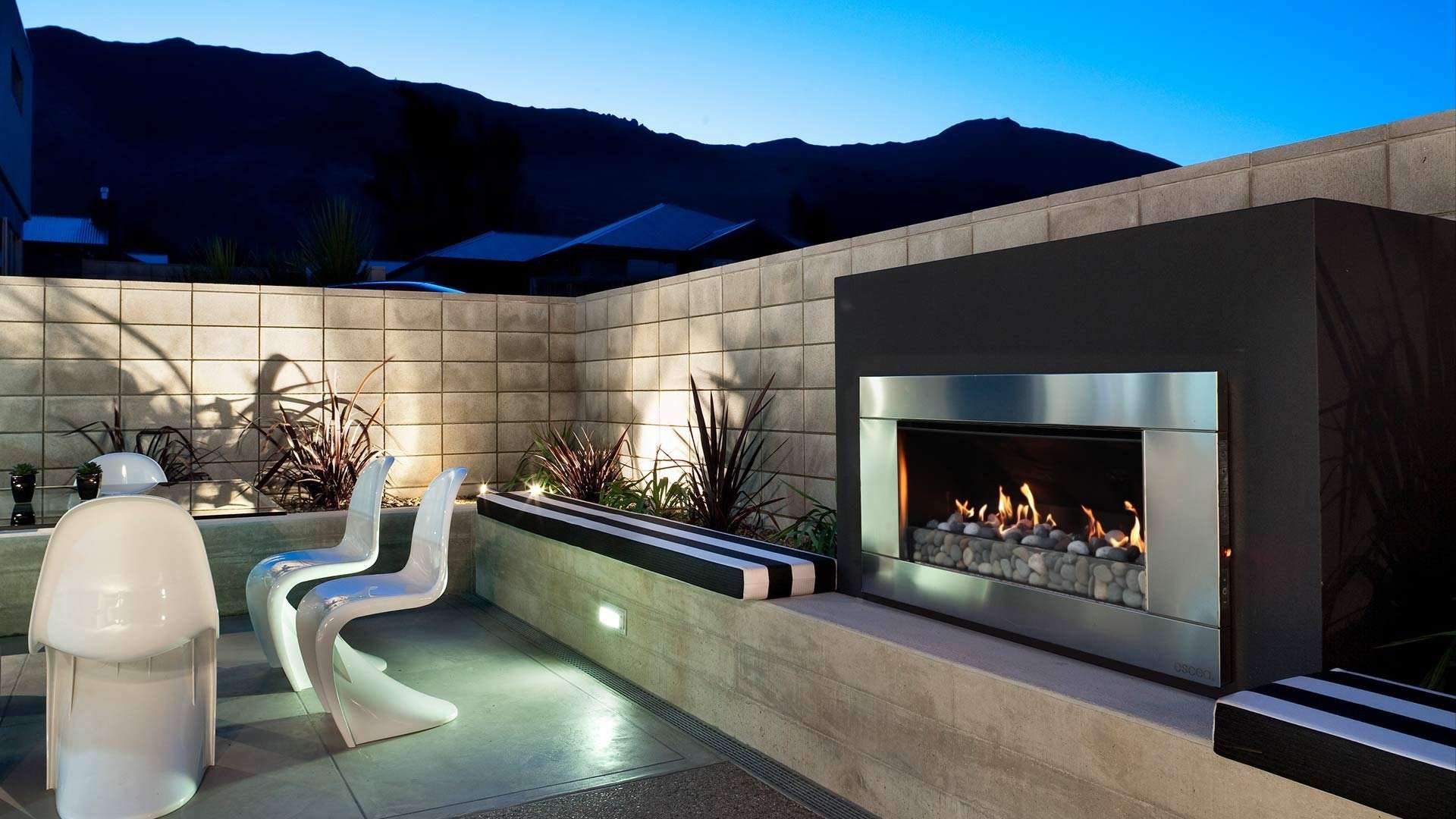There are so many different options out there now – fire pit, wood cooking fire, gas fire. What suits you depends on what you’re after, your home and your budget.
Outdoor Gas Fires
A gas fire is a lovely addition to your deck to add ambience and extend the outdoor entertaining hours and seasons. A gas fire doesn’t crank out as much heat or give you cooking ability, but it has less installation restrictions.

The Escea EF5000 Outdoor Gas Fireplace is the perfect addition to the deck of this Auckland home.
There’s no need for a flue and because the surround stays cool enough, you can be more creative with surround materials and have more design freedom. Basically you just need to factor insufficient ventilation, as it is open-fronted. Escea gas fires also turn on at the touch of a button and have no maintenance - perfect for busy urban households.

This Dunedin home features the Escea Outdoor Gas Fireplace which will keep guests warm throughout the seasons.
Tips for installing an outdoor gas fireplace:
- Outdoor gas fireplaces kick out about 16kW of heat, so work best in sheltered areas such as patios and decks close to the home – just make sure they have enough ventilation.
- No flue or council/building consent is needed so gas fires are perfect for urban homes and apartments. You will need a gas fitter and electrician to install the fire.
- Escea outdoor gas fires are also Zero Clearance rated, which means the wall stays cool enough to handle most materials. There’s no need for expensive fire-rated wall constructions and you have the freedom to surround it in a variety of materials – even timber.

An outdoor gas fireplace is a focal point in this alfresco dining space and features a concrete surround with spot lighting to further accent the outdoor fire.
Outdoor Wood Fires
An outdoor wood fire makes a great barbecue but council regulations vary on installation rules, so you should check with your local council before purchasing and installing. Different fires have different specifications you need to be aware of as well. Some wood fires can be attached to the home, and others can’t.
Do your research and think about where you want the fire to go, as well as how you want to use it.

A hanging daybed has a prime position in front of the Escea EW5000 outdoor wood fireplace in this Auckland home.
Tips for installing an outdoor wood fireplace:
- The rules and regulations for burning wood vary council to council and can be quite complex, so check with your local council to get clarification before you purchase. One tip is to go for an outdoor wood fire with cooking capability, as cooking fires are more likely to be compliant.
- Research the manufacturer’s installation manual before purchase too - specifications (such as hearth thickness and attachment to home) vary for different products and you want to ensure your fire is installed correctly from the get-go.
- Wood fires need to be enclosed in non-combustible masonry, stone, concrete or brickwork to withstand the heat. A builder or landscaper can help create the surround of your choice.

The EW5000 Outdoor Wood Fireplace features in these two homes by architects Dravitzki Brown. Both wood fires have been made a focal point in their respective outdoor areas.
Tips for starting and burning a wood fire:
- Always use dry wood, as wet wood produces less heat and more smoke and pollutants.
- Start with kindling wood and stack it vertically against the back of the firebox, using fire starters to ignite the wood faster. Stack with space between the sticks to allow oxygen to grow your flames.
- Once the embers get going, load in larger firewood until you get the right amount of heat. Continue to load it with wood as needed and remember to keep stoking it to keep it going.
Learn more about Stoke’s Outdoor Fireplace Range here.




